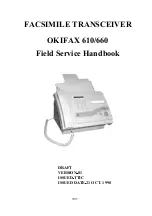
Appliqué, Patchwork and Quilt Stitching
S-30
e
Start sewing.
f
When the end of the stitching is reached, stop the
machine.
Sew until the mark at the lower edge of the 1/4" quilting
foot aligns with the lower edge of the fabric.
1
6.4mm (1/4 inch)
2
End of stitching
3
Mark on 1/4" quilting foot
Quilting
Sandwiching batting between the top and bottom layers of
fabric is called “quilting”. Quilts can easily be sewn using the
walking foot* and the quilting guide*.
* Sold separately with some models.
a
Baste the fabric to be quilted.
b
Remove the presser foot and the presser foot holder.
• For details, refer to “Removing and attaching the
presser foot holder” in the “Basic operations”
section.
c
Hook the connecting fork of the walking foot onto the
needle clamp screw.
1
Connecting fork
2
Needle clamp screw
d
Lower the presser foot lever, insert the presser foot
holder screw, and then tighten the screw with the
screwdriver.
1
Presser foot holder screw
e
Select a stitch.
f
Place one hand on each side of the presser foot, and
then evenly guide the fabric while sewing.
Note
• Thread the needle manually when using the
walking foot, or attach the walking foot only after
threading the needle using the needle threader.
• When quilting, use a 90/14 home sewing
machine needle.
• The walking foot can only be used with straight
or zigzag stitch patterns. Do not sew reverse
stitches with the walking foot.
• When sewing with the walking foot, sew at a
speed between slow and medium.
• When using the walking foot, test sew on a scrap
piece of fabric that is to be used in project.
2
3
1
CAUTION
• Be sure to securely tighten the screws with the
screwdriver, otherwise the needle may touch
the presser foot, causing it to bend or break.
• Before starting to sew, slowly turn the
handwheel toward you (counterclockwise) and
check that the needle does not touch the
presser foot. If the needle hits the presser foot,
the needle may bend or break.
a
b
a
















































